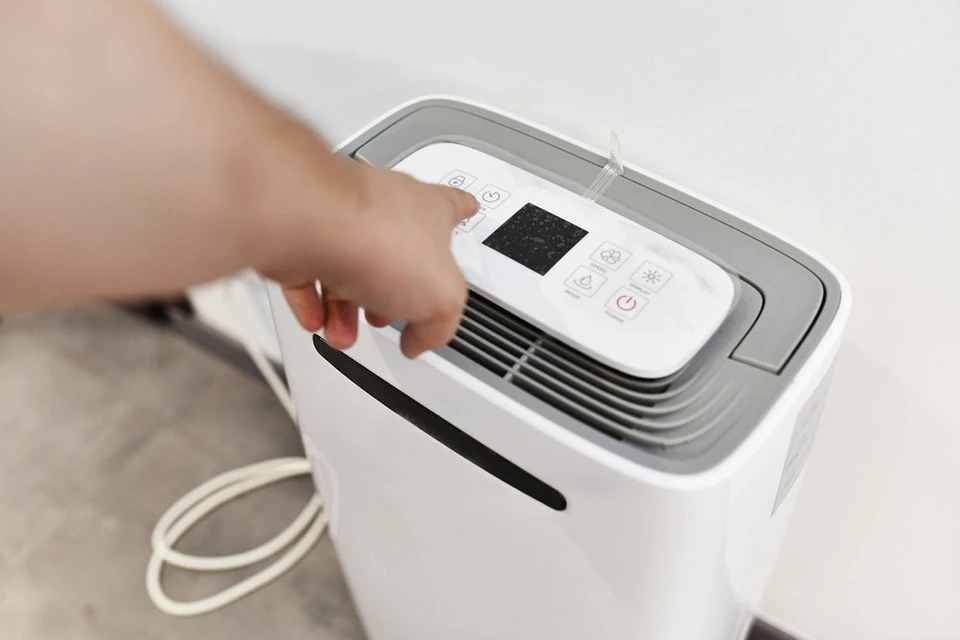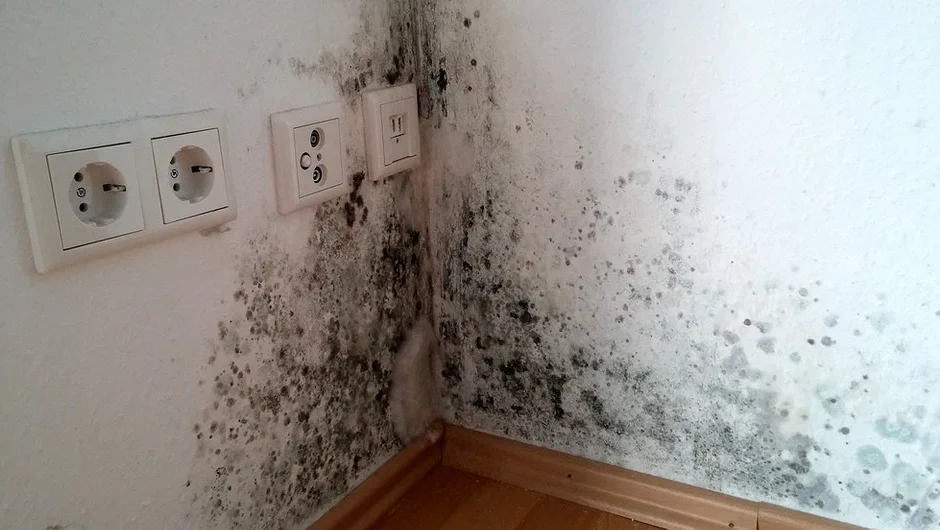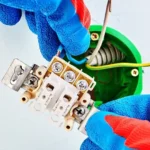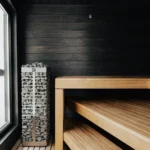We explain condensation and why it appears in your home, and we give useful advice on how to get rid of dampness.
If moisture runs down the window panes in streams during the cold season, the walls and floor get wet, and mold “blooms” in the corners, condensation and dampness appear in the house. Excessive humidity has a bad effect on the microclimate, spoils furniture, decoration, and the building itself, and harms people’s health. They start getting sick more often, and new diseases appear. This is especially dangerous for the elderly, children, and people with allergies. Therefore, dampness must be eliminated immediately. Let’s figure out how to get rid of condensation in the house.
What is condensate and where does it come from?
The appearance of condensation, small droplets of water, is caused by the condensation process. It proceeds as follows. Air flows are capable of accumulating moisture, thereby increasing their humidity. At the same time, the “moisture capacity” of air depends on its temperature. The lower it is, the less moisture it can hold. Condensation is a decrease in the temperature of a humid air flow, leading to precipitation of water droplets. For example, condensation appears on window glass, cold pipes, etc.
Certain indoor conditions contribute to condensation. In particular, excessive air humidity. There are many reasons for excessive humidity: errors in the ventilation system, constant drying of wet laundry indoors, the presence of a steam source, etc. Also contributing to condensation are temperature differences, and the presence of cold surfaces on which moisture “falls”. This could be a window pane, a freezing wall or roof, etc.
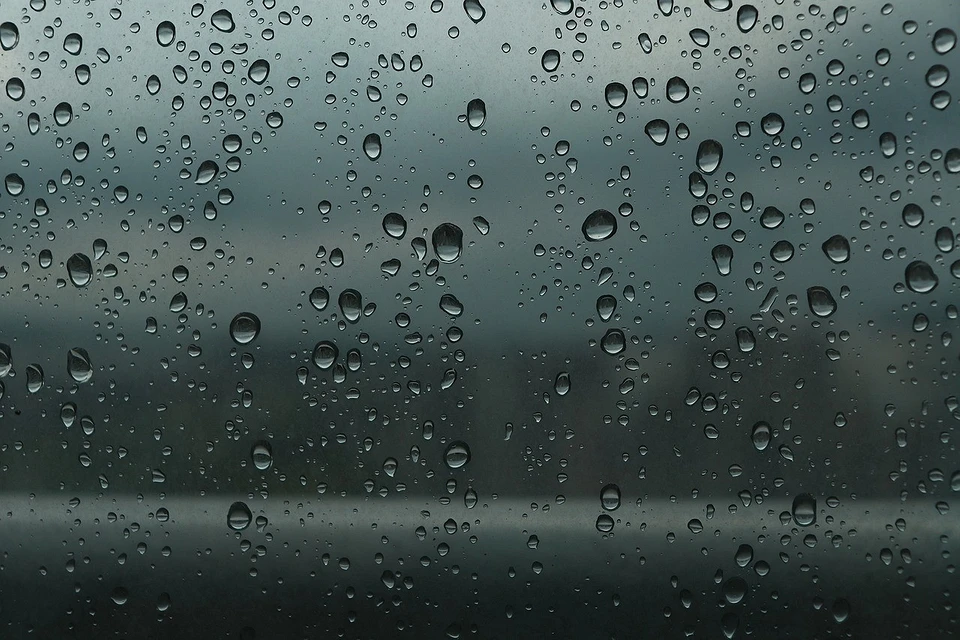
Why does condensation form on walls?
Dampness and temperature changes contribute to the condensation of moisture from the air. Let’s look at the main reasons for the formation of condensation on the walls.
- Poor thermal insulation or its absence. When the temperature outside drops, a poorly insulated wall cools down, and drops of moisture condense on its surface.
- Household over-humidification is when the air humidity in the room increases due to some household activities: drying a large amount of laundry, cooking, lack of ventilation, etc.
- Errors in ventilation arrangement or its absence. A properly adjusted ventilation system removes excess moisture from rooms and normalizes the humidity of air flows. Otherwise, moisture accumulates in the rooms.
- Insufficient heating capacity. Cold air holds less moisture than warm air. It is more humid in a cold room and more condensation forms.
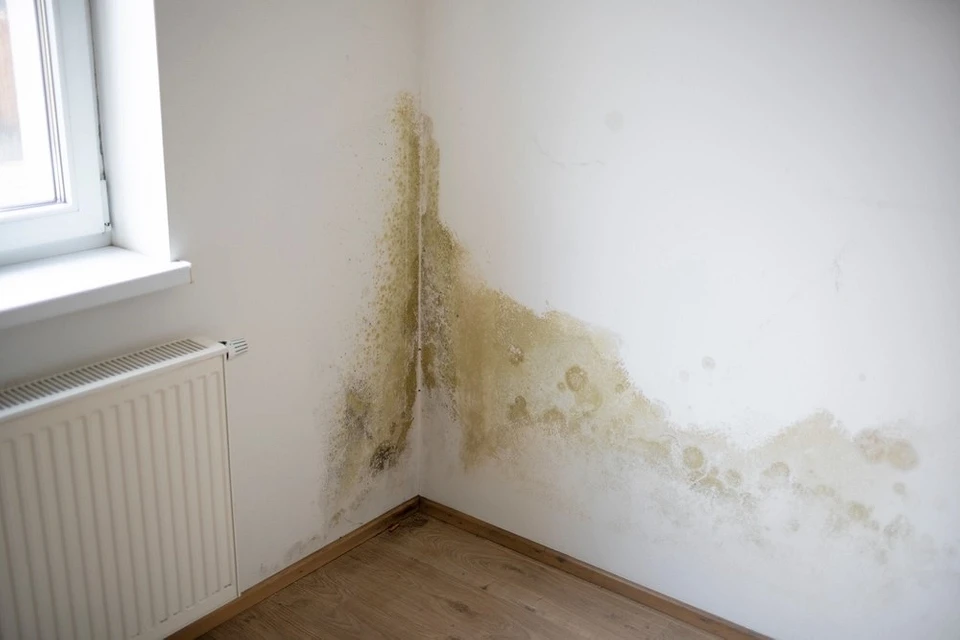
What to do if condensation forms on the walls of a private house
We have listed the main reasons for moisture settling on the walls of the house. Let’s figure out how to get rid of condensation in a house.
Insulation of walls
If building codes were violated during the construction of the building or the thermal insulation has become unusable over time, it is necessary to insulate the walls. First of all, it is necessary to determine on which side the insulation will be laid. Experts recommend insulating the house from the outside. This is due to the “dew point”. This is the name of the place where condensation occurs and drops of moisture fall. Optimally, the dew point should be inside the wall, closer to its outer side.
If you insulate the walls from the inside, the dew point will shift closer to the room. This will lead to abundant condensation, which will be under the insulation layer. Therefore, it will not be able to evaporate. Moisture will begin to accumulate inside the wall under the insulation, which is very undesirable. Gradually, it will become damp, and begin to deteriorate, and fungus and mold will appear. Thus, internal insulation only worsens the situation, since a “wet” wall without insulation at least has the opportunity to dry out. With a heat insulator, this is impossible.
External insulation “takes” the dew point away from the room. This gives the wall double protection. From the inside, it is protected from moisture loss by the heat coming from the room. From the outside, the heat is retained by the insulator and the external finish. This significantly reduces the amount of condensed moisture. Moreover, even if it forms, it dries quickly. This is facilitated by the heat coming from inside the room. Thus, the walls of a house should be insulated only from the outside.
The choice of thermal insulators is very large, depending on the type of facade finishing. You can use modern technological solutions such as spraying with polyurethane foam, or eco-wool or choose easy-to-install insulation boards isolat, polystyrene foam, etc. In any case, you need to correctly calculate the required thickness of the insulator and lay it correctly. It is important to strictly follow the installation technology and subsequent finishing of the insulated facade.
Read more: Seven types of insulation for the home: which one to choose and why
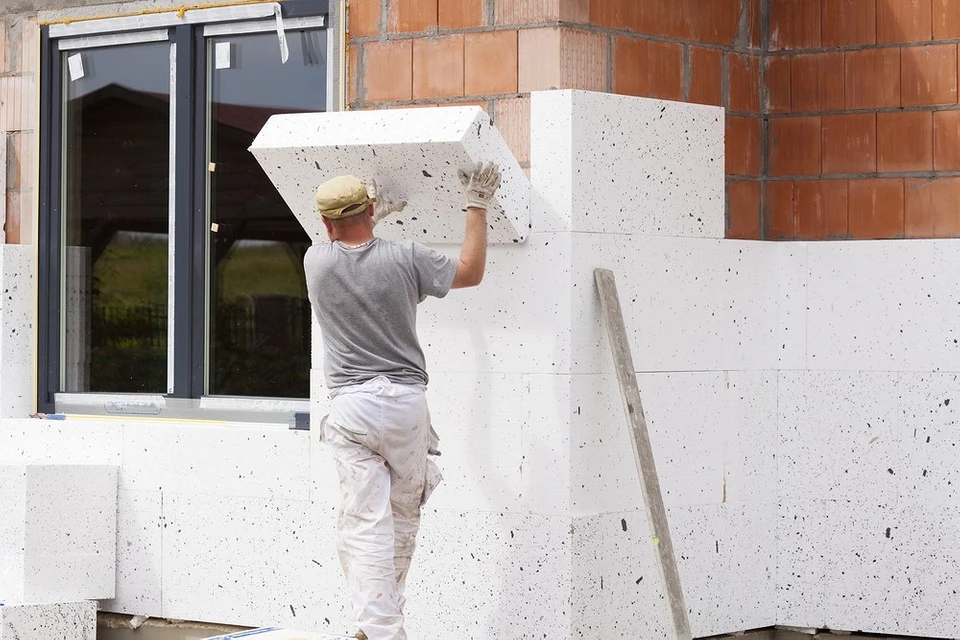
Arrangement of effective ventilation
A properly calculated and built house is airtight. Therefore, for normal air exchange and removal of excess moisture, it needs a ventilation system. It can be natural or forced. An unorganized natural system is the most ineffective. It involves air exchange through regular ventilation, which does not always give the desired result. An organized natural ventilation system is a set of inlet and outlet openings through which air exchange occurs naturally. Their location and dimensions are calculated by specialists.
This system is more efficient but may be insufficient since it depends on weather conditions. In addition, there is a high risk of freezing in the areas where the air ducts are installed. The maximum efficiency is provided by a forced supply and exhaust system. In this case, there are also air ducts, but the flow through them is forced, due to the operation of special equipment. A properly designed and correctly installed forced ventilation system guarantees normal air exchange and the absence of excess moisture. Therefore, if condensation appears and there is no ventilation, it is worth considering its arrangement.
Another reason for increased humidity in the house with a ventilation system may be its malfunction. To exclude this, it is necessary to inspect the ventilation shafts and openings. They can become clogged with debris and dirt, which reduces the efficiency of air exchange. If necessary, they need to be cleaned, and debris and dust should be removed from the grates. In forced systems, in addition to cleaning, it is necessary to inspect the equipment to make sure it is in good working order. Perhaps something has broken or is on the verge of breaking and cannot produce the required power. All malfunctions must be corrected. If the natural ventilation system is fully functional, but the humidity in the house is still high, it means that it cannot cope with the load. It makes sense to install a forced system.

Arrangement of efficient heating
It is more difficult to combat high humidity in a cool room. The colder the air, the lower its moisture capacity, so if there is insufficient heating, condensation forms on the walls of the house. To correct the situation, you need to find out why the rooms are cool. It is possible that the capacity of the installed heating system is not enough to properly heat the entire area of the house. In this case, it is necessary to find and correct all the shortcomings in the calculations and replace the equipment if necessary.
It happens that the heating system has enough power, there is even a reserve, but the house is still cold. Then the reason, most likely, lies in the poor thermal insulation of the building, due to which the heat goes outside. It is necessary to carry out thorough thermal insulation of the entire building. Particular attention should be paid to the insulation of windows and doors, this is where the heat most often goes. It is quite possible that the insulation of the walls and roof has collapsed or was initially insufficient. All this needs to be corrected.
Read more: Which home heating system is better: comparing 6 heating systems
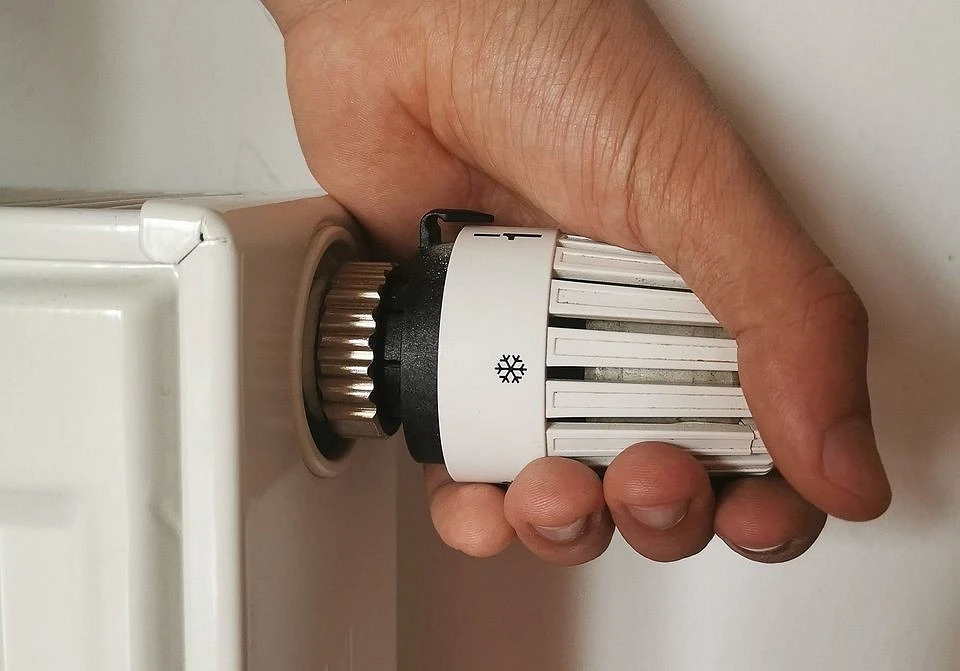
Removal of “household” moisture
Many household reasons lead to excessive humidity of air masses inside the house. To effectively combat condensation, you need to remove all unnecessary air “humidifiers”, even if they are not obvious. Let’s list what can cause excessive humidity.
- Malfunction of utility systems. Small, and therefore hardly noticeable, leaks in sewerage or water pipes can become a source of moisture. Especially if they are in hard-to-reach places. It is very important to periodically inspect utility lines and immediately correct all problems.
- Faulty or missing basement or subfloor waterproofing. In this case, dampness from these rooms will gradually move higher. It is important to monitor their condition, repair them in time, and fix waterproofing that has become unusable.
- Drying wet laundry in rooms. If there are a lot of things, they are very wet and you dry them often, it is quite possible that they are over-humidified. To fix this, you need to dry the laundry outside. If this is not possible, you should look for other drying options. For example, install a tumble dryer, install an electric clothes dryer, etc.
- Excessive fumes, especially in the kitchen or bathroom. During cooking, a lot of steam is generated, which remains in the air. To minimize its amount, it is recommended to install an exhaust hood above the stove, which will remove excess steam. There is also a lot of fumes in the bathroom. Here, it is advisable to install forced ventilation or at least install an electric heated towel rail that can work all year round.
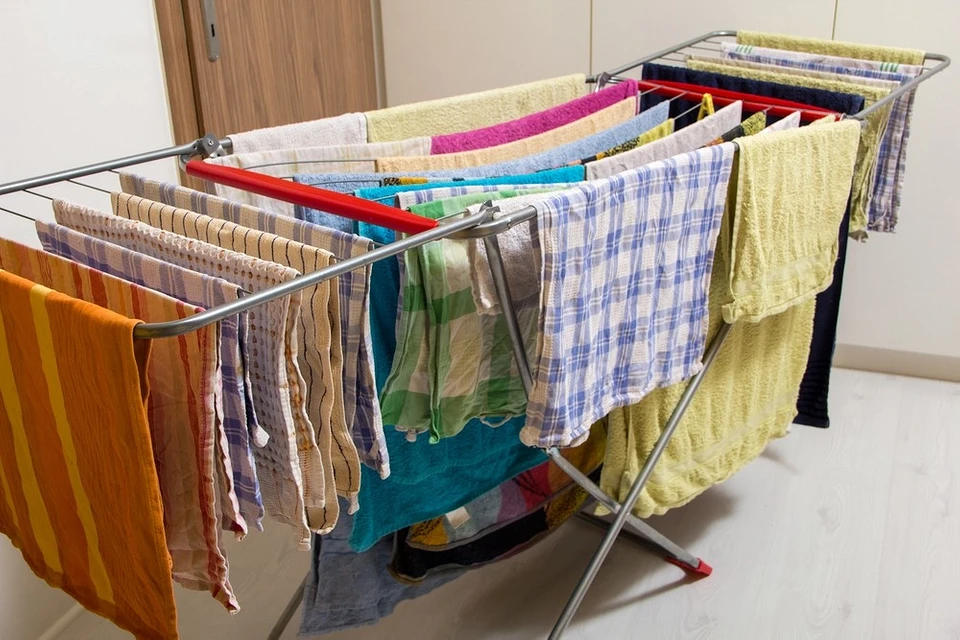
Preventive measures
We have prepared a selection of tips that will help prevent dampness in your home.
- Ventilate the rooms daily for at least 3-5 minutes.
- Check the serviceability of utility lines. Replace pipes with plastic ones – condensation does not form on them.
- Do not dry clothes in your home, especially if there is no effective ventilation.
- Install an electric heated towel rail in the bathroom.
- Install a dehumidifier.
All these methods are used as a preventive measure. They are unlikely to help if the thermal insulation is damaged or there are problems with ventilation. If this is the reason for the condensation, it is necessary to carry out repair work.
